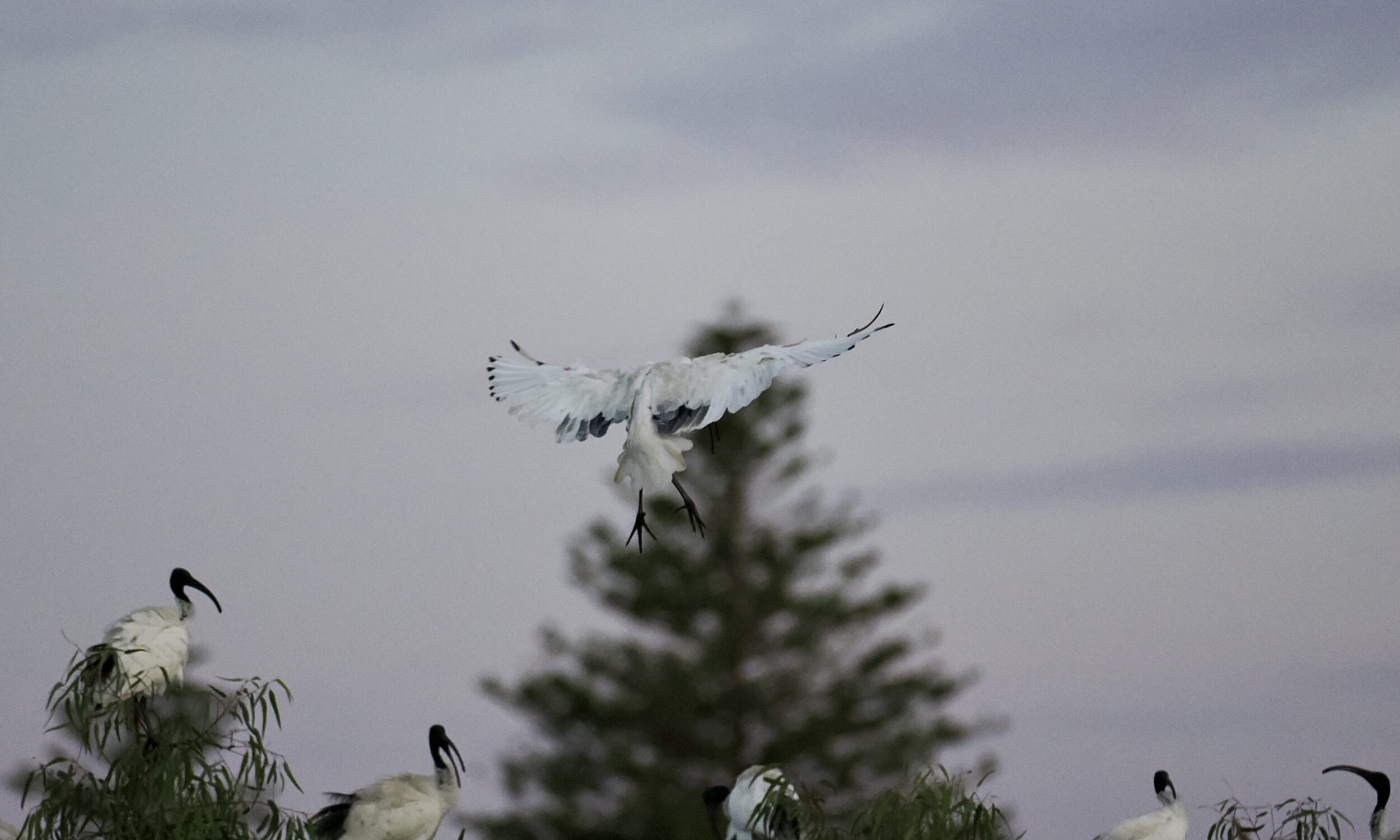The very same bird can “look” very different, depending on the observer’s knowledge/ignorance, that observer’s particular preconceptions/prejudices, and the bird’s current activity/stance/position.
And if one is photographing a bird that is both much-loved and widely-loathed, it is easy for a photographer to pander to – or to defy – “negative” or “positive” preconceptions about it.
This little series features one such species.
Recently, a sizeable number of “bin chickens” – Australian white ibis, Threskiornis molucca – have elected to roost on some conveniently-denuded branches by the western side of Lake Monger, in inner-urban Perth.
From the 1970s on, this highly adaptable species has “colonised” Australia’s major cities.
Before that happened, it was commonly known as “sacred ibis”, was not familiar to most city-dwelling humans, and not especially associated with bins, dumpsters and garbage.
All photos in this series were taken at Lake Monger within a “window” of just seven minutes, just after sunset – from 6. 18 to 6. 25 pm on 31 March 2024.
Those who regard “bin chickens” as “awkward”, “ugly”, or “ungainly” could use this post’s image as “supporting evidence”.
The next post’s featured image lacks anything that a clear-sighted, reasonable person would describe as awkward, ugly, or ungainly.
Footnote:
The Washington Post recently “discovered” “bin chickens”.
Published on 05 February 2024, the relevant headline described the Australian white ibis as Sydney’s stinky, grimy but mostly beloved bird.
The rest of Australia looks forward to the day when The Washington Post discovers how inaccurate was its description.
The Post’s article-proper claims that “bin chickens” are most especially abundant in Sydney, but that they range from Brisbane to Melbourne.
They have in fact long since “conquered” the capital city of every mainland Australian State and Territory, and scientists expect that climate change will soon see them move into Tasmania.
Still, the article is amusing, and has good photos.

Comments